Tour Length
Rates in USD $ – Change Currency
Per person, excl. international flightsOperator Rating
Other Tour Features
Filter by Operator
Filter by Accommodation
Etosha Safari Tours & Holidays
Etosha National Park is easily Namibia’s premier safari destination. The salt pans can make the landscape feel like a hallucinatory void in the heat of the day, shimmering away into eternity, yet there is magic in the air close to sunset. Luxury lodges and camps surround the park, while busy and well-provisioned camping areas lie scattered from one end of Etosha to the other.
-
Best Seller
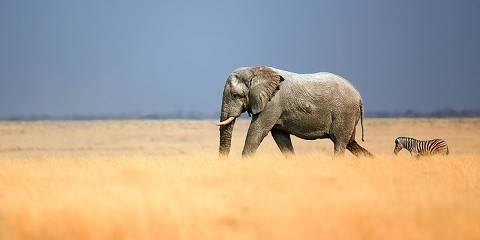
10-Day Classic Namibia
$3,972 to $4,972 pp (USD)
Namibia: Self-drive
Mid-range Lodge & HotelYou Visit: Windhoek (Start), Kalahari Region, Sossusvlei (Sand Dunes), Swakopmund (City), Damaraland, Etosha NP, Okonjima NR, Windhoek (End)

Wayfairer Travel

4.8/5 – 184 Reviews
-

15-Day Eco-Friendly Namibian Self-Drive Safari
$3,977 pp (USD)
Namibia: Self-drive
Mid-range Lodge & Guest HouseYou Visit: Windhoek (Start), Sossusvlei (Sand Dunes), Swakopmund (City), Erongo Mountains (Mountain Range), Damaraland, Palmwag Concession (Damaraland), Etosha NP, Eastern Etosha NP, Windhoek (End)
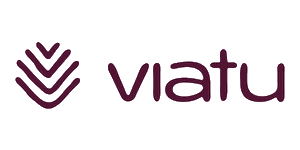
Viatu
4.9/5 – 93 Reviews
-

3-Day Etosha Classic Unguided Shuttle Safari
$607 pp (USD)
Namibia: Shared tour (max 20 people per vehicle)LuxuryLodge
You Visit: Windhoek (Start), Etosha NP, Windhoek (End)

Indigo Safaris
4.8/5 – 158 Reviews
-
Top Rated Operator

11-Day Extended Classic Namibia Safari
$4,641 pp (USD)
Namibia: Private tour
Mid-range Lodge & Tented CampYou Visit: Windhoek (Start), Sossusvlei (Sand Dunes), Swakopmund (City), Twyfelfontein (Rock Art), Etosha NP, Windhoek (End)
_774_5c10b301bc706.gif)
Nature Travel Namibia
5.0/5 – 185 Reviews
-
![3-Day Etosha National Park Big Five Safari]()
3-Day Etosha National Park Big Five Safari
$1,124 to $1,187 pp (USD)
Namibia: Shared tour (max 6 people per vehicle)
Mid-range ChaletYou Visit: Windhoek (Start), Etosha NP, Windhoek (End)

Knap Tours
5.0/5 – 13 Reviews
-
![7-Day Highlights Namibia Mid-Range Fly-in Safari]()
7-Day Highlights Namibia Mid-Range Fly-in Safari
$4,389 to $4,609 pp (USD)
Namibia: Private tour
Mid-range Lodge & HotelYou Visit: Windhoek (Start), Sossusvlei (Sand Dunes), Swakopmund (City), Etosha NP, Hosea Kutako Airport (End)

Desert Air Africa Safaris
5.0/5 – 30 Reviews
-
Top Rated Operator

7-Day Namibia - Etosha National Park Self-Drive Safari
$2,099 pp (USD)
Namibia: Self-driveLuxuryLodge
You Visit: Windhoek (Start), Otjiwarongo (City), Etosha NP, Windhoek Airport (End)

MoAfrika Tours
4.9/5 – 2,285 Reviews
-
![5-Day Etosha National Park Expedition]()
5-Day Etosha National Park Expedition
$2,309 pp (USD)
Namibia: Private tour
Mid-range LodgeYou Visit: Windhoek (Start), Eastern Etosha NP, Etosha NP, Windhoek (End)

Firefinch Safaris & Car Hire
5.0/5 – 13 Reviews
-
![7-Day Cruise Ships- Namibian Coast/Etosha Tour (Luxury)]()
7-Day Cruise Ships- Namibian Coast/Etosha Tour (Luxury)
$6,765 pp (USD)
Namibia: Private tourLuxuryLodge & Hotel
You Visit: Walvis Bay (Start), Swakopmund (City), Etosha NP, Windhoek (City), Hosea Kutako Airport (End)

PEA Tours and Safaris
5.0/5 – 15 Reviews
-
![6-Day Epic Namib Desert, Coast & Etosha NP Tour]()
6-Day Epic Namib Desert, Coast & Etosha NP Tour
$3,124 pp (USD)
Namibia: Private tour
Mid-range Lodge & HotelYou Visit: Windhoek (Start), Sossusvlei (Sand Dunes), Swakopmund (City), Etosha NP, Windhoek (End)

Mhof Tour and Safaris
4.7/5 – 3 Reviews
-
![3-Day Exhilarating Etosha Safari Camp Gondwana]()
3-Day Exhilarating Etosha Safari Camp Gondwana
$605 pp (USD)
Namibia: Shared tour (max 10 people per vehicle)
Mid-range LodgeYou Visit: Windhoek (Start), Etosha NP, Windhoek (End)

Beyond Africa Safaris
-
![3-Day Etosha Explorer Namibia Safari]()
3-Day Etosha Explorer Namibia Safari
$770 pp (USD)
Namibia: Shared tour (max 6 people per vehicle)BudgetCamping
You Visit: Windhoek (Start), Okonjima NR, Eastern Etosha NP, Swakopmund (City), Windhoek (End)

Swahili Paradise Tours & Safaris
4.1/5 – 90 Reviews
-
![8-Day Best of Namibia]()
8-Day Best of Namibia
$2,695 pp (USD)
Namibia: Shared tour (max 20 people per vehicle)
Mid-range Lodge & HotelYou Visit: Windhoek (Start), Sossusvlei (Sand Dunes), Swakopmund (City), Etosha NP, Windhoek Airport (End)

Africa Zim Travel & Tours
4.9/5 – 162 Reviews
-
![8-Day Mid-Range Safari & Scenic Tour of Namibia]()
8-Day Mid-Range Safari & Scenic Tour of Namibia
$2,211 to $2,398 pp (USD)
Namibia: Guided self-driveLuxuryLodge & Hotel
You Visit: Windhoek (Start), Sossusvlei (Sand Dunes), Deadvlei (Sand Dunes), Swakopmund (City), Etosha NP, Windhoek (City), Windhoek Airport (End)

Africa Incoming
4.7/5 – 14 Reviews
-
Best Seller
![10-Day Namibia Dream Safari]()
10-Day Namibia Dream Safari
$5,973 to $6,468 pp (USD)
Namibia: Private tourLuxuryLodge & Hotel
You Visit: Windhoek (Start), Okonjati GR, Etosha NP, Damaraland, Twyfelfontein (Rock Art), Skeleton Coast NP, Namib-Naukluft NP (Namib Desert), Kalahari Desert, Hosea Kutako Airport (End)

CrissCross Namibia Safaris
5.0/5 – 60 Reviews
-
![10-Day Best Namibian Attractions Self-Drive Safari]()
10-Day Best Namibian Attractions Self-Drive Safari
$3,361 to $3,705 pp (USD)
Namibia: Self-drive
Mid-range Lodge & HotelYou Visit: Windhoek (Start), Kalahari Desert, Namib-Naukluft NP (Namib Desert), Swakopmund (City), Damaraland, Etosha NP, Okonjima NR, Windhoek Airport (End)

Southbound Tours
5.0/5 – 14 Reviews
-

12-Day Namibia Classic Accommodated Safari
$4,279 pp (USD)
Scheduled Start DatesNamibia: Shared tour (max 8 people per vehicle)
Mid-range Lodge & Tented CampYou Visit: Windhoek (Start), Mariental (Town), Sossusvlei (Sand Dunes), Swakopmund (City), Damaraland, Etosha NP, Eastern Etosha NP, Windhoek Airport (End)

Kingfisher Safaris
4.9/5 – 60 Reviews
-
![10-Day Namibia Popular Classic Self-Drive Safari]()
10-Day Namibia Popular Classic Self-Drive Safari
$2,073 to $2,264 pp (USD)
Namibia: Self-drive
Mid-range Lodge & Guest HouseYou Visit: Windhoek (Start), Otjiwa Game Farm, Etosha NP, Twyfelfontein (Rock Art), Swakopmund (City), Sossusvlei (Sand Dunes), Windhoek (End)

Jangwa Tours and Safaris
5.0/5 – 8 Reviews
-
![15-Day Namibia to Zambezi]()
15-Day Namibia to Zambezi
$3,388 pp (USD)
Scheduled Start DatesNamibia & Zambia: Shared tour (max 12 people per vehicle)
Mid-range Lodge & Guest HouseYou Visit: Livingstone (Start), Victoria Falls, Zambezi Region, Rundu (City), Etosha NP, Brandberg Mountain (Rock Art), Swakopmund (City), Namib Desert, Windhoek (End)

Sunway Safaris
4.8/5 – 37 Reviews
-
Top Rated Operator
![6-Day Namibia Highlights Flying Safari]()
6-Day Namibia Highlights Flying Safari
$6,599 to $6,899 pp (USD)
Namibia: Private tourLuxuryLodge & Hotel
You Visit: Windhoek (Start), Sossusvlei (Sand Dunes), Western Etosha NP, Windhoek (End)

Wayfairer Travel

4.8/5 – 184 Reviews
8 Questions About Etosha Safaris

Answered by
Anthony Ham
Anthony is a renowned Africa expert and author of many Lonely Planet guidebooks, including the bestselling ‘Botswana & Namibia’ guide.› More about Anthony
8 Questions About Etosha Safaris
 Anthony Ham
Anthony Ham
When is the best time to visit Etosha National Park?
“An Etosha safari is best enjoyed from May to October, which is the Dry season. During these months you can expect dry conditions, firm ‘road’ surfaces, good numbers of wildlife and big safari crowds. Lodges and tented camps are at their most expensive. High season begins in July, so Etosha safaris in May or June have many of these advantages without the crowds and with lower prices. October sees animals draw near to waterholes in large numbers, but what makes them do so (the extreme heat) also makes it an uncomfortable time to visit. The Wet season, while not as intense as elsewhere in southern Africa, begins in November and really takes hold from January to March. This is a less ideal time for Etosha safari trips. It is, however, when migrating birds are in the park.”
› More about the best time to visit Etosha 1How big is the pan and can you walk across it?
“Etosha Pan runs for almost 120km/75mi through the park and covers an estimated 4,800km²/1,853mi². It is dry for most of the year, although it can have some shallow surface water after rain. The high rates of evaporation in these parts ensure that the water rarely remains for long. Left behind are salt deposits (the name Etosha translates as ‘Great White Place’) that shimmer in the heat haze and seem to have no end. We do not recommend walking across the pan. In any case, most of it lies within the national park boundaries and any such crossing would be illegal. Also, most of the animals and the best scenery are found along the pan’s southern shore. As you explore the area in a vehicle, you can still get a sense of the beauty and scale of this vast natural feature.”
2Is Etosha good for a self-drive safari?
“Self-drive Etosha safari visitors rave about coming here. A good network of well-maintained trails crosses the park in every direction, and the camping areas are like not-so-small villages. They have a host of organized safari activities, swimming pools, restaurants, grocery stores and more. Paved roads connect Etosha to the rest of Namibia. For some travelers, the ease of reaching and exploring the park means it is not quite adventurous enough. But such is the appeal of its exceptional wildlife and special scenery that most are willing to overlook their need for more hard-core adventure.”
3What animals can I expect to see on safari in Etosha?
“Elephants caked in the Etosha dust are a recurring Etosha image, as is a lion feeding by a waterhole while gazelle, giraffe, gemsbok and zebra watch nervously nearby. There are around 330 lions within Etosha, making it Namibia’s primary lion stronghold. Rhinos draw near to the floodlit waterholes alongside the rest camps after dark, while giraffe and wildebeest are also commonly seen. Watching the giraffe, legs splayed and drinking warily at a waterhole, is another memorable Etosha image. Two near-endemic species (found only in Namibia and Angola) to watch out for are the elegant black-faced impala and the tiny Damara dik-dik. The dik-dik mates for life and is never far from its partner. If you’re lucky, you might also encounter the honey badger and bat-eared fox.”
› More about the wildlife of Etosha 4How long is the drive to Etosha?
“It’s around a six-hour drive (435km/270mi) from the Namibian capital Windhoek to Etosha National Park along a paved road. But only the most impatient travelers make the journey in one hit because there are so many fine places to stop along the way. If you’re heading east toward the Zambezi Region (formerly Caprivi Strip) or Khaudum National Park, most of the drive is on reasonable paved roads. If you’re heading west toward Damaraland or Kaokoland, the roads west of Etosha are rarely paved and often in terrible condition. This makes for slow going.”
5What are the road conditions like in the park?
“Etosha is a key highlight on the Namibia safari circuit, and the number of vehicles to pass through here is higher than any other park or reserve in the country. But even so, the roads inside the park are generally well maintained. They’re not paved, but are graded regularly and easily navigated in an ordinary 2WD vehicle. This situation may change after the rains, when conditions can become slippery and even downright treacherous. But really heavy rains are rare out here. Beyond the park, roads to many other destinations in the country are paved and well maintained.”
6What type of accommodations are available?
“Most of the luxury accommodations on Etosha tours are found beyond the park boundaries, particularly to the south and east of the park. These lodges and tented camps are quiet, rarely crowded and well located for launching excursions into the park. Etosha safari prices are generally quite expensive, but there are some good budget options as well. Inside the park, everyone should spend at least one night in one of the rest camps. You’ll wake up right on the edge of prime wildlife-viewing terrain in the heart of the park. Even if the rest of your Namibia tour has been spent in more exclusive surroundings, the rest camps offer the chance to see black rhinos at the floodlit waterholes adjacent to the camps. You can even take a glass of wine to enjoy while you watch one of the great spectacles of Namibia safari lore. The campsites are too closely spaced at some of the rest camps, but there are simple motel-style rooms on offer as well.”
7What lodges or camps would you recommend for an Etosha safari?
“I’ve stayed at many Etosha lodges and camps and don’t really have a favorite. On my Etosha tours, I always try for a mix of tented camp beyond the park (with the promise of a quieter, more intimate safari experience, and higher levels of comfort) and the good-natured friendliness and utter lack of pretension in the rest camps. The camps lie close to some of the best wildlife-viewing locations. Perhaps it’s because I’ve explored many of the more popular areas of Etosha at length, but in recent times I’ve particularly enjoyed the quieter trails out in the west of the park. Dolomite Camp and Olifantsrus Camp are two excellent options.”
8Etosha Safari Reviews

Lizzie is a reputed guidebook writer and author of the Footprint guides to South Africa, Namibia, Kenya, Tanzania, Uganda and Zimbabwe.
Exceptionally Good Game Viewing in Unusual Environments
Etosha means ‘Great White Place’ in the Herero language after the giant, parched and dazzlingly white Etosha Pan. I find this the perfect environment for silhouetting the animals – a lone wildebeest or herd of handsome gemsbok can be...

Mike is an award-winning wildlife writer, former editor of Travel Zambia magazine and author of the Bradt Guide to Southern African Wildlife.
White dust and waterholes
Etosha’s harsh landscape is not to everyone’s taste: the wilderness of dusty, rubble-strewn thorn scrub surrounding the vast, featureless salt pan is impressive rather than beautiful. The wildlife, however, is consistently outstanding...
 CA
CA
I liked seeing the variety of animals. I was amazed at how close we were to the animals. The water holes provide an excellent opportunity to see many animals up close - they come to you rather than you to them.
 US
US
Don't Miss Staying Up at the Waterholes
Visited Namibia and Etosha after spending a week in Kenya. While not as game rich or scenic as the parks in Kenya, Etosha certainly has a character in its own. Etosha is unique because of its sprawling dry landscape and its waterholes that...
 NL
NL
Etosha is stunning. It has a great infrastructure but it is a pity that maintenance is apparently not a priority. Roads are poor compared to other parts of the country and the NWS accommodations could use a make over.
 US
US
It is breathtaking. Unique and beautiful place.I love everything the wildlife and the nature amazing
Etosha is home to a range of wonderful species, black rhinos, lions and elephants. The reserve is doing a excellent work protecting, rehabilitating the animals. The service was excellent respectful staff. Accommodation was amazing, the...










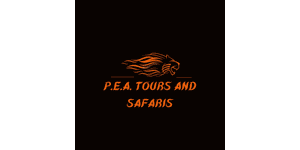

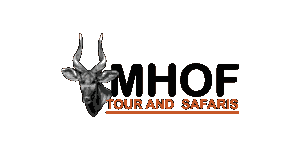











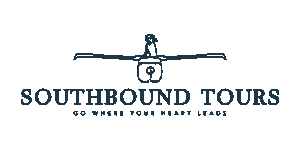
_310_5d0ca3398b5d1.960x480-65.jpg)






